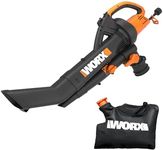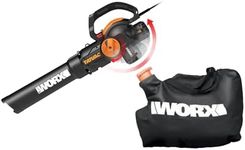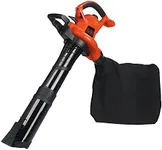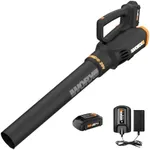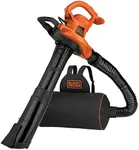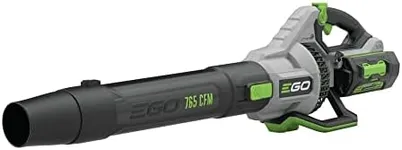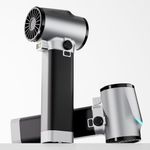Buying Guide for the Best Leaf Blower And Vacuums
Choosing the right leaf blower and vacuum can make yard work much easier and more efficient. The key is to understand the different specifications and how they align with your specific needs. Whether you have a small yard or a large property, there are various features to consider that will help you make the best choice. Here are the key specifications to look at when selecting a leaf blower and vacuum.Power SourceLeaf blowers and vacuums can be powered by electricity (corded or cordless) or gas. Electric models are generally quieter and lighter, making them suitable for small to medium-sized yards. Cordless models offer more mobility but have limited battery life. Gas-powered models are more powerful and can handle larger areas, but they are heavier and require more maintenance. Choose based on the size of your yard and your preference for mobility and maintenance.
Airflow (CFM)CFM stands for cubic feet per minute and measures the volume of air the blower can move. Higher CFM means the blower can move more leaves and debris at once. For small yards, a CFM of 200-400 is usually sufficient. Medium-sized yards may require 400-500 CFM, while large properties might need 500+ CFM. Consider the size of your yard and the amount of debris you typically need to clear.
Air Speed (MPH)Air speed, measured in miles per hour (MPH), indicates how fast the air is moving out of the blower. Higher air speed can help move heavier debris. For light tasks like clearing grass clippings, 100-150 MPH is adequate. For heavier tasks like moving wet leaves, look for 150-200 MPH. For the most demanding tasks, 200+ MPH may be necessary. Match the air speed to the type of debris you need to clear.
WeightThe weight of the leaf blower and vacuum affects how easy it is to use, especially for extended periods. Lighter models (under 10 pounds) are easier to handle and are suitable for small to medium tasks. Heavier models (10-20 pounds) may offer more power but can be tiring to use for long periods. Consider your physical strength and how long you typically use the blower at one time.
Noise LevelNoise level is measured in decibels (dB) and indicates how loud the blower is. Quieter models (under 70 dB) are better for residential areas and for those sensitive to noise. Models with 70-90 dB are common and offer a balance between power and noise. Anything above 90 dB can be quite loud and may require hearing protection. Consider your tolerance for noise and any local noise regulations.
Mulching RatioThe mulching ratio indicates how much the vacuum can reduce the volume of leaves. A higher ratio means more efficient mulching. Common ratios are 10:1, 12:1, and 16:1. For example, a 10:1 ratio means the vacuum can reduce 10 bags of leaves into 1 bag of mulch. If you plan to use the vacuum function frequently and want to minimize waste, look for a higher mulching ratio.
Ease of UseEase of use encompasses features like ergonomic handles, adjustable speeds, and easy conversion between blower and vacuum modes. Look for models with comfortable grips, intuitive controls, and minimal setup requirements. If you have specific needs, such as adjustable speeds for different tasks, make sure the model you choose offers these features. Consider how user-friendly the model is and how it fits your specific needs.


